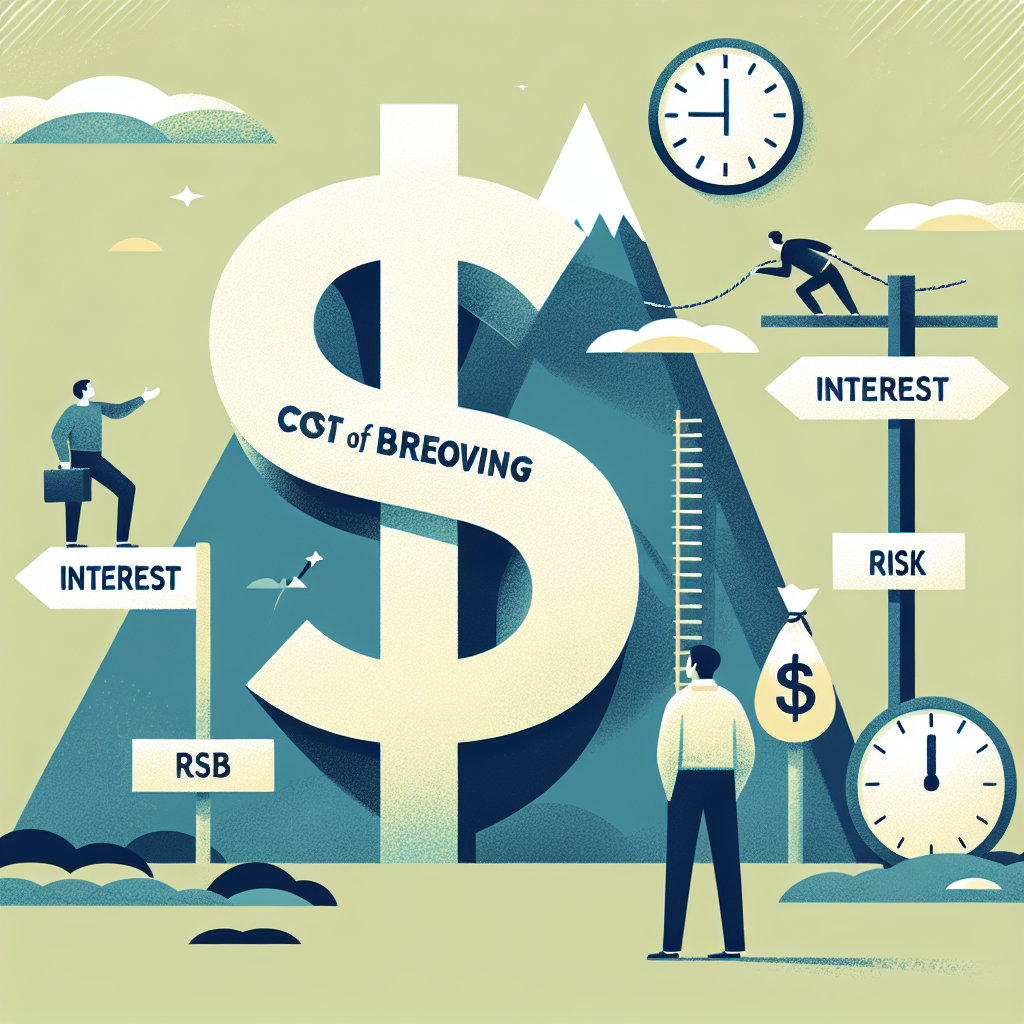
Cost of borrowing meaning
The Cost of Borrowing: A Comprehensive Guide
Understanding financial terms is crucial for informed financial decisions. One term that often causes confusion is the cost of borrowing meaning. This article aims to clarify this term, delve into its components, and explore its implications for individuals and businesses alike.
What is the Cost of Borrowing?
The cost of borrowing refers to the total expenses incurred when obtaining funds through loans or credit. It is not simply the amount borrowed, but encompasses various factors that contribute to the overall financial burden associated with borrowing. This cost can significantly influence individual and business financial strategies, making it essential to understand its various aspects.
Key Components of the Cost of Borrowing
There are several key components involved in calculating the cost of borrowing. They include:
- Interest Rates: This is the price paid for the amount borrowed, usually expressed as an annual percentage rate (APR).
- Fees and Charges: Many loans come with additional fees, such as origination fees, closing costs, and service charges, which increase the total cost of borrowing.
- Loan Term: The length of time over which the loan is to be repaid can also impact the cost. Longer terms may result in lower monthly payments but could lead to paying more interest over the life of the loan.
- Creditworthiness: Borrowers with higher credit scores are often offered lower interest rates, which can significantly reduce the total cost of borrowing.
Understanding Interest Rates
Interest rates can vary widely based on several factors. Understanding how they work is vital to grasping the cost of borrowing meaning.
Types of Interest Rates
There are primarily two types of interest rates that borrowers should be aware of:
- Fixed Rate: This type of rate remains constant throughout the life of the loan, providing predictability in monthly payments.
- Variable Rate: This rate can fluctuate based on market conditions, which may lead to surprising changes in the cost over time.
Factors Influencing Interest Rates
Several factors can determine the interest rate a borrower may receive:
- Market Conditions: Economic indicators and changes in the Federal Reserve's policy can influence interest rates.
- Loan Type: Secured loans (backed by collateral) often have lower rates compared to unsecured loans.
- Credit Score: A higher credit score typically leads to more favorable interest rates.
Calculating the Total Cost of Borrowing
To fully understand the cost of borrowing, borrowers should consider both the immediate and long-term expenses involved in loan agreements.
Using an Example to Illustrate Costs
Let’s say you are considering a loan of $10,000 with an interest rate of 5% over a three-year term. Here's how to break down the costs:
| Year | Principal Payment | Interest Payment | Total Payment |
|---|---|---|---|
| 1 | $3,636.36 | $500.00 | $4,136.36 |
| 2 | $3,636.36 | $181.82 | $3,818.18 |
| 3 | $3,636.36 | $36.36 | $3,672.72 |
In total, you would pay approximately $11,627.26 for a $10,000 loan at a 5% interest rate, which includes both principal and interest over three years.
The Importance of Understanding the Cost of Borrowing
For both individuals and businesses, understanding the costs associated with borrowing is crucial for effective financial management. Misjudging the cost of borrowing meaning can lead to financial difficulties.
Impact on Personal Finance
For individuals, the cost of borrowing can have significant implications on personal budgets and savings. High borrowing costs can decrease disposable income, making it difficult to save for future goals such as buying a home or retiring comfortably.
Impact on Business Strategies
For businesses, understanding borrowing costs is critical for investment planning and capital expenditure decisions. The cost of capital can influence everything from pricing strategies to product development timelines.
Minimizing the Cost of Borrowing
There are several strategies borrowers can employ to minimize borrowing costs:
Improve Your Credit Score
Investing time and effort into improving one’s credit score can lead to more favorable borrowing terms. Regularly monitor credit reports, pay bills on time, and reduce outstanding debts to enhance your credit profile.
Shop Around for Loans
Different lenders offer varying interest rates and terms, so it’s beneficial to compare options before settling on a loan. Consider not only the interest rate, but also additional fees and the overall repayment schedule.
Opt for Shorter Loan Terms
While monthly payments may be higher for shorter loan terms, they typically result in lower overall interest costs, which may save money in the long run.
Conclusion
Understanding the cost of borrowing meaning is essential for making informed financial decisions. It encompasses various factors, including interest rates, fees, and loan terms. By comprehending these concepts and their implications, individuals and businesses can effectively manage their debts, minimize borrowing costs, and make strategic financial decisions that support their goals.
Ultimately, the landscape of borrowing is not just about acquiring funds but about understanding their cost. With the right knowledge and tools, borrowers can move towards a financially stable future.
By Guest, Published on August 2nd, 2024